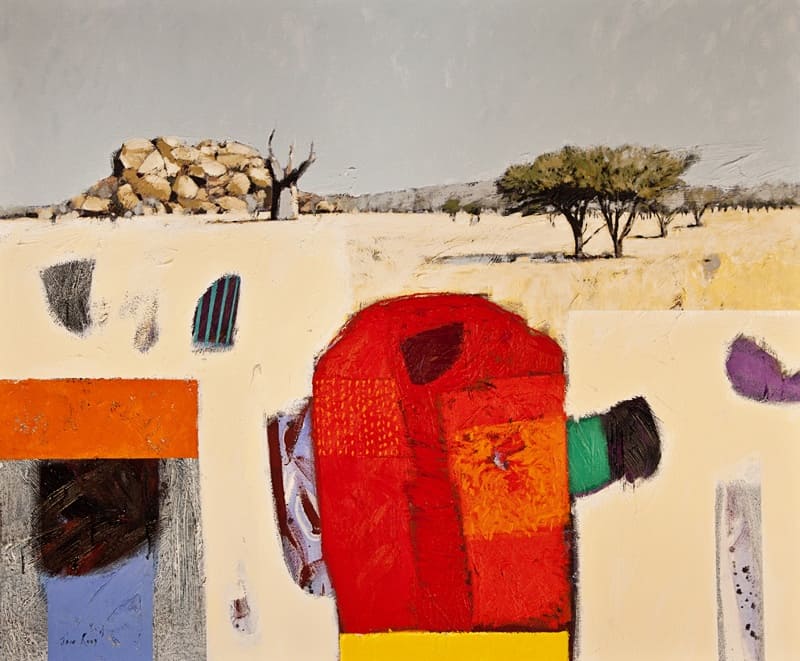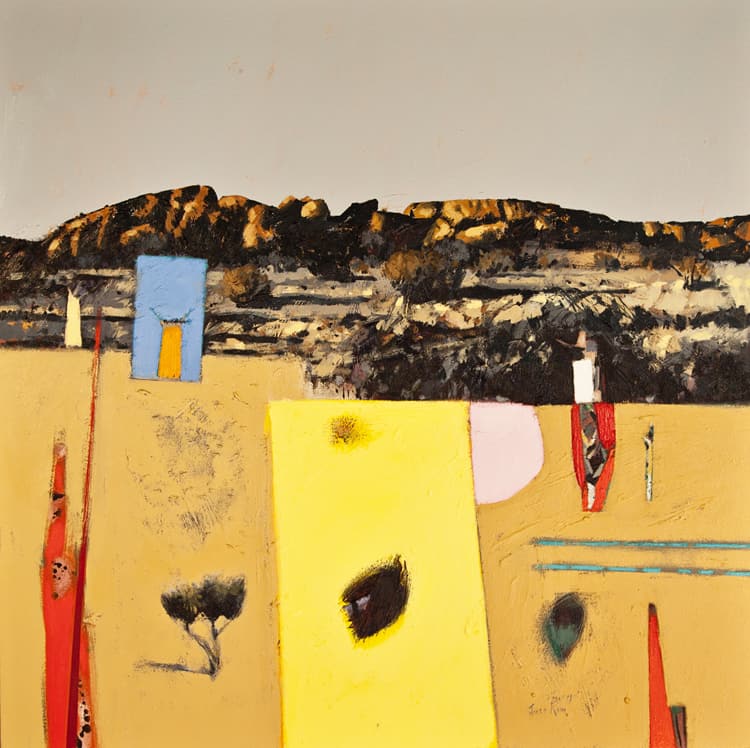Art South Africa in conversation with Christopher Moller of The Christopher Moller Art Gallery, exhibiting at the Cape Town Art Fair (25 – 27 Oct)
1) Art South Africa: Which artists will you be featuring at the Cape Town Art Fair and why did you chose those artists specifically?
Christopher Moller: We are restricted to the number of artists we can take to the fair, due to the size limitation of our two stands. But I am also a believer of the ‘less is more’ approach. Artists include: Aldo Balding, Albert Coertse, Ruan Huisamen, Louis Nel, Lou Ros, Jaco Roux, Andrew Salgado and Andre Stead.

Jaco Roux, Khongani Plains, Mapungubwe, oil on canvas, 100 x 120cm.
2) ASA: Jaco Roux, one of your artists that will be at the Fair, also currently has a solo show My Limpopo, on at The Christopher Moller Art Gallery. How has the reception been to his work? Which of his works will be on show at the Art Fair?
CM:My Limpopo has been a great success with 90% of the show being sold so far. We have selected two remaining works Khongani Plains, Mapungubwe and Leokwe Mapungubwe that will be on exhibit at the Cape Town Art Fair. Jaco’s work is real, intense and evocative. He paints from the heart and is fascinated with the strong domineering presence of the Baobab tree. In his work he captures the sunlight scorching down onto the earth and depicts it with splashes of intense colour and sharp contrasts. Colour is very important to him, and he is aware of the affect it has on one’s mood. The overwhelming response to the exhibition, has been positive, in that people have found his interpretation of the South African landscape refreshing.

Jaco Roux, Leokwe Mapungubwe, oil on canvas, 100 x 100cm
3) ASA: On the Christopher Moller Art Gallery website you quote Jacob Bronowski (“No work of art has been created with such finality that you need to contribute nothing to it. You must recreate the work for yourself… But there is no picture, unless you yourself enter it and fill it out.” ) Does this describe the way that you view/approaches art? How do you select the artists your gallery represents?
CM: I believe art is an emotional response and not a cognitive one. Whether a person has a doctorate in art history, or someone who has had very little exposure to art, each person’s response is equally important. At the end of the day, a piece of art is about the interaction between it and the viewer. If the work fails to achieve a response, then the artist has failed in their job. Of course having the experience of being exposed to art does help in it’s analysis and appreciation. But art at the end of the day is about emotion and it meant to make us ‘feel’ rather than only ‘intellectualizing’ it.
In certain quarters, there is way too much snobbery lingering. Art has become like ‘the emperors new clothes’ syndrome, where it is more about the idea and concept than the artwork itself. People need to be true to themselves about the appreciation and the application of artwork and not fall victim to flavor of the month and fashion trend mentality. A good artwork will endure forever.
As a gallery we look for quality, consistency and development in an artist as well as building sound working relationships.
Building and maintaining a relationship with anyone can be challenging at the best of times. With the artist, the key component is understanding what is behind the ‘smoke and mirrors’. A dealer needs to ascertain not only the execution of an artwork, but more importantly, the inspiration and driving force behind it. If the dealer is unable to grasp what makes an artist do what they do, then he certainly cannot sell the work. Many would argue one should base a painting souly on its own merit. That is true to a point, but what interests me is the psychology behind what makes the artist do what they do. At times, even the artist cannot fully articulate this and sometimes the dealer does not get it. So there needs to be a synergy in the relationship of understanding and respect between each other. At the end of the day, an art dealer is a salesman, it is his job to peak someone’s interest in a painting, especially when it comes to a challenging subject matter; sometimes one needs to give a viewer a starting point, like the start of a ball of string, so that the viewer has a starting point and can dig deeper and unravel their interpretation of what they see.
4) ASA: What are your hopes for The Cape Town Art Fair? Do you think it will achieve its aims of enhancing the image of Cape Town as an international art destination, and of the Fair becoming an ‘international draw card’?
CM: I believe the Cape Town Art Fair is going to be a huge success in the South African art scene and has the potential to take the world by storm. However the fair is going to take time to establish itself. Even the organizers admit this, saying ‘Rome was not built in a day’. The international based Fiera Milano events company are behind it, and are committed to building the fair. I commend the art dealers behind the name change of calling it the Cape Town Art Fair, rather than its previous name ‘Art For Me’. Cape Town in itself is a massive brand and having a Cape Town Art fair is a winning combination.



